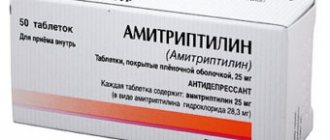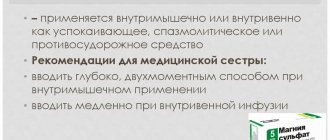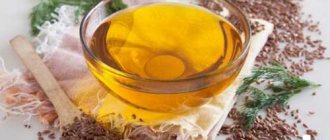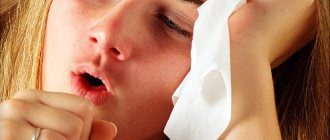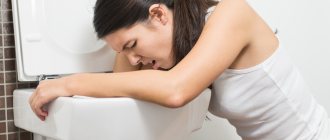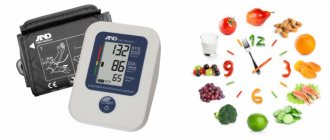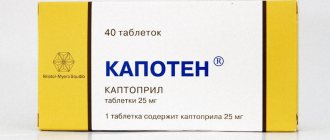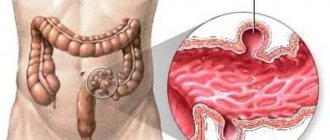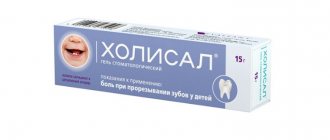Glycerin substance use
Glycerin is universal, which is why it is so widely used in all sectors of human activity. It has antiseptic properties, due to which it is actively used by pharmacological factories for the preparation of medicines. Its low price makes glycerin indispensable in cosmetology, medicine and the food industry.
- In cosmetology,
glycerin is used to prepare various recipes for creams, masks and ointments as a moisturizing component.
Its protective effect allows you to save the skin from the effects of pathogenic microbes that can penetrate through microcracks and allows you to keep it fresh and healthy. But not all cosmetologists recommend it for frequent use. Due to its hygroscopicity, glycerin, on the contrary, absorbs moisture rather than giving it away, which is a stumbling block between representatives of different schools. But here we should not forget that if the surrounding air is dry, then there will be nothing for it to absorb
. - The use of glycerin in medicine
is associated with its ability to perfectly dissolve water and alcohol, thanks to which it is possible to increase the viscosity of any medicine or, on the contrary, to dilute it, that is, it protects medical ointments and pastes from drying out quickly and extends their shelf life. Various suppositories (suppositories) for rectal use are also prepared on the basis of glycerin. Sore throat - and here not a single medicine can do without it. Due to its high viscosity, it perfectly coats the mucous membranes of the mouth, which helps soothe a sore and sore throat. The antiseptic and disinfecting properties of glycerin are suitable for treating wounds and cuts. - Food grade glycerin
(
E422
) is produced only from natural oils and fats.
- In bakeries,
they process baked goods to prevent the appearance of a stale crust. - In the production of chewing gum, E422
is added to increase its viscosity; here, glycerin also acts as a sugar substitute. - Pasta and vermicelli
are treated with food grade glycerin to reduce sticking during cooking. - Chocolate
- confectioners use it when they want to make the bars more delicate in taste. - And even in the tobacco industry
they found use for it. Each cigarette is treated with food-grade glycerin to eliminate too strong an aroma.
Those products that contain E422 are stored much longer and look fresher.
Interaction
Glycerol is a chemical substance whose main pharmacological action is to have a softening effect on epithelial tissues. Polyhydric alcohol has also found wide use as a cheap solvent for organic compounds such as protargol, boric acid, and tannin.
When interacting with the skin surface, glycerin does not exhibit an active chemical reaction, saturating only its surface layer. At the same moment, the drug is able to penetrate the mucous membranes of the human body.
The manufacturer does not provide a separate list of specific body reactions that could be classified as side effects. The drug is well tolerated even by patients who have an individual tendency to allergic dermatitis.
The result of interaction with other drugs is unknown, since clinical trials have not been conducted. The fact that glycerin is included in most moisturizing creams, ointments and gels indicates the low chemical activity of the substance.
Hair Recipes
- “Lamination”
: mix heated 1 tsp olive and 1 tsp. burdock oil, add 1 tsp. glycerol, vitamin E (ampoule), stir. After 60 minutes, wash off. - Moisturizing:
take 3 tsp. glycerin, 3 tsp. apple cider vinegar (can be replaced with lemon juice), add 3 egg yolks, mix everything. The mixture is washed off with warm water. Hair masks are recommended to be done in courses: 8 sessions over 2 months. Mandatory condition: after applying the mixture, the curls are hidden under a plastic cap, and insulated with a towel on top, kept for 30-60 minutes, then washed with shampoo. - Hand bath.
Ingredients: half a liter of warm water, 2 tbsp. l. starch, 20 ml glycerol. Keep your hands in the liquid while the water is warm, then pat your skin dry with a towel. - Softening mixture for heels.
To make your heels smooth and soft again, smear them with this homemade remedy at night: mix glycerin with ammonia (1:1), apply to the skin, do not wash off. The mixture is effective, only because of the ammonia it has an unpleasant odor.
GLYCEROL. WHAT IS IT NEEDED FOR?
Glycerin is an alcohol and is a viscous, colorless, sweetish liquid with no odor. The average person is most accustomed to seeing it in medicines or among the ingredients in cosmetics. But, in fact, this substance has an incredibly wide range of uses.
1. Glycerin has found its most common use in cosmetology. It can often be found in many cosmetic products, such as creams, masks, lotions, soaps, etc. Given the emollient properties of glycerin, these are mainly cosmetics aimed at combating dry skin.
2. Practical women quickly understood the principle of action of glycerin and use it at home, bypassing industrial cosmetics. Glycerin is added to homemade face masks, creams, tonics, hair sprays, and lip balms. It is also indispensable in the treatment of cracked and rough skin on the heels. It is used with pleasure in home and technical soap making.
3. Another area where glycerin has proven itself is medicine and pharmacology. When used externally, it is used to heal and moisturize affected areas of the skin, being an excellent antiseptic. It is part of many healing ointments, gels and creams, syrups, and also increases the viscosity of some medications.
4. For internal use, glycerin is given for cough, intracranial and intraocular pressure, glaucoma, constipation. For the latter ailment, there are special suppositories that can be used from the first months of life. Glycerin has contraindications: diabetes, liver or kidney disease.
5. In the food industry, glycerin is known as a food additive - stabilizer E422. With its help, the required consistency of raw materials is achieved in the manufacture of flour and confectionery products. Glycerin is used in the production of alcoholic products, in particular liqueurs. E422 extends the shelf life of finished products.
7. In the tobacco industry, glycerin is added to tobacco. Thanks to its hygroscopic properties, it regulates humidity and removes the characteristic unpleasant smell of cigarettes. For this purpose, glycerin is also included in electronic cigarette cartridges.
8. Nitroglycerin is used in the military industry. It is used for diluting gunpowder and making explosives. Nitroglycerin is part of the fuel used to fuel large military equipment. It also helps cool gun barrels after long firefights.
9. And of course, one cannot ignore the benefits of glycerin in home life. Stains that are difficult to remove, from berries or coffee, for example, can be washed off well with a mixture of salt and glycerin in equal proportions
Add a little pharmaceutical glycerin to the water for washing floors or furniture - this will give them a fresh look and shine. Genuine leather items such as bags, jackets and shoes will last longer and look newer if they are rubbed with glycerin.
Due to its unique properties, the component described above is successfully used in the textile, leather, paper and paint industries. Glycerin is also involved in the production of plastics, resins, cellophane, detergents, and silicone candles. It is difficult to find such a universal and multifunctional substance.
Pharmacodynamics and pharmacokinetics
Liquid glycerin, the instructions for use of which state that the pharmacodynamics of the chemical substance lies in its neutral action in relation to the skin surface, is a good solvent.
It is able to moisturize the epithelium, preventing the formation of cracks, as well as excessive dryness of the skin. It is used as an excipient in some gels and creams. The pharmacokinetics of glycerol has not currently been studied, and there are no data on clinical studies in this direction.
How much does glycerin cost?
Glycerin received its widespread use due to its modest cost. In Russia, on average, its price ranges from 8.5 rubles to 27 rubles for a standard bottle of 25 - 40 g.
| City | Volume | Manufacturer | Price |
| Yaroslavl | JSC Samaramedprom | 14 rub. 00 kop. | |
| JSC Samaramedprom | 27 rub. 00 kop. 20 rub. 00 kop. | ||
| Tverskaya FF | 9 rubles 00 kopecks | ||
| Nizhny Novgorod | Tverskaya FF Tula FF Ivanovskaya FF | 17 rub. 00 kop. 19 rub. 00 kopecks 16 rub. 00 kopecks | |
| Krasnodar | Iodine technologies and marketing | 10 rub. 00 kop. | |
| FF St. Petersburg | 14 rub. 00 kop. | ||
| Iodine technologies and marketing | 27 rub. 70 kopecks |
The table shows the average price by region of Russia for 2016.
Minuses
- Using glycerin suppositories for a long time can cause loss of sensitivity in rectal receptors. As a result, the baby will not be able to defecate on his own.
- In case of an overdose of the drug, a burning sensation in the rectum appears in the child, due to which the baby begins to cry. The mother may decide that the baby is showing discomfort due to constipation, but the decision to put another candle is wrong.
- If you use glycerin suppositories excessively, you can achieve the opposite effect - diarrhea.
- An allergic reaction to glycerin suppositories is possible.
The benefits and harms of glycerin for the face
Like every remedy, glycerin also has its positive and negative qualities. Fortunately, the pros far outweigh the cons.
Facial benefits:
- Retains moisture in the skin.
- Helps nutrients penetrate into cells.
- Accelerates wound healing.
- Moisturizes.
- Clears pores of dirt.
- Antiseptic.
- Softens.
Moisturizing the dermis occurs due to the hygroscopicity of the substance: it promotes the absorption of moisture from the environment. If a person is inside a dry room, then glycerol draws moisture from the cells of the dermis, releasing it to the environment.
Harm of glycerol:
- The drug is used only at high air humidity, at least 60%, otherwise, instead of moisturizing, the opposite effect is obtained.
- Flushes out melanin.
- May contribute to the appearance of comedones in the presence of inflamed skin.
- In combination with silicone it causes allergic skin reactions.
- Removes tan quickly.
The more humid the air, the faster the process of saturating cells with moisture occurs.
Reviews from doctors and specialists
Attention! The information presented in the article is for informational purposes only. The materials in the article do not encourage self-treatment. Only a qualified doctor can make a diagnosis and give treatment recommendations based on the individual characteristics of a particular patient.
Krivorukov Andrey Andreevich, 33 years old, Gatchina
I often recommend glycerin for hair to my clients. After use, the hair became soft, manageable, and moisturized.
Protasova Irina Igorevna, 37 years old, Obninsk
I always advise older women to use an anti-wrinkle mask with glycerin for their facial skin. The effect occurs after a month of use. The skin is tightened, wrinkles are reduced, and the color becomes healthy. The combination of glycerin and vitamin E has proven itself well for the face. Useful for any age and skin type. You just need to test it first so as not to cause harm.
Ankudinova Svetlana Fedorovna, 46 years old, Ryazan
I often suffer from bronchitis. A remedy consisting of lemon juice, honey, and glycerol helped a lot. I took a tablespoon 4 times a day. Glycerin helped: the cough soon became mild and went away quickly.
Sviblova Alena Nikolaevna, 22 years old, Tver
Glycerin for heels is what you need. I add vinegar, vitamins A and E to the mask. My feet are clean and soft.
Koprova Elena Igorevna, 40 years old, Perm
I remember my mother using glycerin on her hands. It helped her, and thanks to the mixture with ammonia, my hands became soft and well-groomed.
Did you find this article useful?
Method 5 for shine
To give your car a shine not only inside, but also outside, try diluting glycerin with water in the following proportion:
- 200 ml water;
- 40 ml glycerin.
The mixture must be applied to the cleaned surface of the car. After the next wash of your favorite car, dampen a slightly clean rag in the freshly prepared solution and cover the entire surface of the car, including the windows, with the mixture. Minor scratches will disappear from the surface of the body, and the paint will noticeably freshen, even the matte finish begins to shine in the sun. This product will help extend the life of your car's paintwork.
It is better to polish a car at above-zero temperatures and indoors.
Rehabilitation of neurological patients
Neurorehabilitation or rehabilitation in neurology is carried out for the following pathologies: MI, TBI, spinal cord injuries, MS, Huntington's chorea, Parkinson's disease, neurological syndromes of the spine, cerebral palsy, ALS, polyneuropathy, NS pathologies, hereditary, etc.
All diseases are divided into 2 groups:
- The first is that a neurological defect exists and has been formed: the goal is to return and restore lost functions.
- The second is hereditary and degenerative pathologies that are constantly progressing; here the goal of rehabilitation is to reduce the main manifestations of pathology. Extrapyramidal system
The descending tracts are included in 2 groups: the pyramidal tract and the extrapyramidal system.
The pyramidal system is responsible for the accuracy and purposefulness of movements at the level of consciousness, breathing and speech.
The extrapyramidal system is responsible for the coordination of involuntary movements, muscle tone, posture and its fixation, and organizes motor emotionality. The extrapyramidal system is involved in the regulation of movement outside the pyramidal system, since it is more ancient in phylogenesis.
The extrapyramidal system consists of: the cerebral cortex; the basal ganglia; brain stem; cerebellum; pathways and motor neurons of the spinal cord.
Only the extrapyramidal system is influenced by hormones and neurotransmitters. Therefore, movements and mood are determined by emotions. And therefore, when the ganglia are damaged, affect disturbances occur (deliberate crying or laughing).
What functions does the extrapyramidal system perform? Regulates muscle tone; tempo, plasticity and rhythm and sequence of movements; provides the motor component of emotions; regulates automated highly specialized movements, brings planned movements, for example, during ballet, learning dances, to automatism.
A reflex is a stereotypical response of the central nervous system to any influence. Reflexes arise in the presence of the NS, which is present in almost all multicellular organisms, and they are carried out through the reflex arc.
Reflexes are divided into subgroups based on different qualities. According to the etiology of education: conditional and unconditional.
By receptor types: extero- and interoceptive. The first are the sense organs: vision, smell, hearing, etc.; interoceptive are the receptors of the internal organs.
By effector: somatic; vegetative - internal organs.
By meaning: protective, digestive, sexual, indicative - they are all unconditional.
Unconditioned reflexes are innate and are inherited. They play a protective role, maintaining the constancy of the internal environment of the body (homeostasis).
The reflex arc of these reflexes is already formed at the beginning of birth and is maintained throughout life. It can only change due to illness.
Conditioned reflexes appear throughout life, as a person develops and accumulates experience and skills. The bark is involved in their formation.
We reveal the secrets of what liquid glycerin is needed for
First of all, I would like to answer a frequently asked question on our topic: what is glycerin, what is it for, and what are the features of its use in different areas of our lives? We'll talk about this in more detail. So.
Glycerin, a transparent, odorless liquid with a sweetish taste, is available in any pharmacy and costs “kopecks” - 10-15 rubles per bottle.
There are few people who have not heard of at least one way to use glycerin, but in fact this substance is universal: it is used in medicine and cosmetology; industries - food (as a stabilizer and emulsifier, E 422), chemical, textile, tobacco, military, etc.; in electrical and radio engineering, etc.
At home, glycerin can be used in different ways - it is safe, and many housewives appreciate its beneficial properties. Glycerin is an organic substance; belongs to the class of polyhydric alcohols and mixes well with ethanol and water. In nature, it is found in vegetable oils and animal fats, and our body also produces it.
Glycerin was isolated a long time ago, in the 18th century, by the Swedish chemist Karl Scheele, who noticed that the process of making soap produced a liquid that was easily soluble in water, transparent and viscous. Now this method is also used, but glycerin began to be obtained not only from fatty acids, but also from sugar, wood flour, and also (synthetic) from oil refining.
It is difficult to tell here how and in what areas glycerin is used. Women are more often interested in areas such as cooking and home treatment, cosmetology and household uses.
articles:
Use in food
In the food industry, glycerin is often used: in the production of candies, marshmallows, chocolate, pasta - for stickiness, bakery products - for fluffiness and softness; chewing gum, soft drinks.
Fashionable hair color spring 2019
To increase shelf life, dried fruits are treated with liquid glycerin, and tea and coffee are treated with liquid glycerin to impart a special taste.
But it is more difficult to buy food grade glycerin for home use, although it costs only 40-50 rubles; It is usually offered by small and large wholesale online stores.
), add glucose (½ tbsp) and glycerin (2 tsp), stir until smooth. Gradually add powdered sugar (450 g) and knead (you can use your hands) until you get a smooth and non-sticky dough.
This mastic, wrapped in film, is stored for about 2 weeks; You can add food coloring during the cooking process.
How it is used in medicine
In medicine, liquid glycerin is used externally and internally. It is prescribed externally more often for skin diseases. You shouldn’t take it orally without a doctor either, although some recipes are very popular.
For example, for constipation, it is taken by diluting it with water 1:1, at the rate of 2-3 ml for each kg of the patient’s weight (interestingly, it is taken in approximately the same way for increased intracranial pressure), or microenemas are made with it.
Pharmacy suppositories with glycerin are well known: they are considered a mild remedy, but they also have contraindications.
In general, glycerin is widely used in pharmacology: in tablets, ointments, creams, pastes, solutions, etc.
Cough recipes with liquid glycerin are also popular. Pharmaceutical highly purified glycerin is mixed equally with freshly squeezed filtered lemon juice and honey (60 ml each), stored in the refrigerator in a tightly closed glass container. Drink 1 tsp. after 2-3 hours, for coughs and sore throats: glycerin softens the mucous membrane, reduces inflammation and prevents the spread of bacteria.
Syrup with ginger is considered effective: add 1 tsp to the indicated ingredients. fresh grated root. But first, the ginger is simmered for 10 minutes over low heat along with the juice, and then mixed with honey and liquid glycerin. They accept it the same way.
Cholecystitis is treated with a warm (40°C) mixture of glycerin with olive oil (1 tablespoon each) and the same lemon juice (from the whole fruit). They drink immediately after waking up in the morning, turn on their right side and lie for half an hour, then another half hour on their back.
Drugs of different groups to reduce ICP
A large number of diseases in the elderly are associated with stroke. They often have negative consequences in the form of loss of the ability to move, speak and think. But vasoactive drugs can avoid or slow down these processes.
They significantly improve blood supply to nerve cells. Vasoactive drugs are divided into several groups. The choice of a specific remedy, determination of the dose and treatment regimen is made by the doctor:
- Myotropic antispasmodics improve blood supply to brain tissue - myotropic antispasmodics. The usual form of release of this group is tablets.
- Angioprotectors - strengthen the walls of blood vessels and protect them from damage by atherosclerotic plaques and blood clots.
- Substances that influence metabolism in nervous tissue enhance cellular energy processes. Piracetam is the basis of about 20 analogues, for example, pyratropil, lucetam, thiocetam, etc., the name of which contains the word “piracetam”.
- Vasoactive drugs that nourish neurons.
- Neurotransmitter substances.
Nursing process is scientifically sound nursing practice of patient management based on the same standards. The goal of any nurse's work is always to care for the patient.
The nurse gives the doctor all the information about the patient’s condition (blood pressure, temperature, respiratory rate, pulse, heart rate, rhythm); his mood background; to self-care skills.
She can report the patient's nursing diagnosis; she must be aware of the patient’s reaction to his disease and condition; teach him self-help techniques and preventive measures outside the hospital.
A successful nursing process in neurology means: mastery of basic nursing manipulations in any area of work: at rest, at the post, in the treatment room, in the ward.
She must know the basic neurological nosologies, signs of urgency of conditions and algorithms for action for them; carrying out blockades, performing a puncture when taking CSF, and being able to perform them; know the main drugs in neurology (doses, routes of administration, side effects.
Examination methods in neurology begin with a neurological examination.
To make a diagnosis, a neurological examination is based on three points: a visual initial examination of the patient and anamnesis; analysis of his heredity; conducting instrumental and clinical examinations.
Specifically, the neurological examination should consist of an assessment of the state of consciousness and its identified disorders; orientation in personality and space; checking and analysis of cerebral symptoms; identification of pathologies when checking the operation of the cranial nerve; reflex testing; assessment of the motor sphere and identification of its disorders.
ICP stabilization has its own characteristics. Complex therapy is often used, when the treatment regimen includes drugs from different pharmacological groups. In mild cases, tablets are prescribed; in severe cases, injectable forms of medications are used. Treatment is usually carried out in courses. The duration of therapy is determined by a neurologist in each specific case.
The doctor prescribes treatment with tablets for intracranial pressure after diagnosing the problem. The treatment complex includes medications, and there are indications for the use of regular procedures that speed up the healing process. This includes light physical education, diet, manual therapy, and gymnastics. Drug treatment involves taking medications that have strong analgesic properties and can treat the symptom. Drugs for reducing intracranial pressure in adults are divided into several groups:
- diuretics (Lasix);
- products with amino acids;
- vasodilators (Cavinton, drugs containing caffeine, Pyramein, Regulton, Saparal);
- group of β-blockers;
- ACE inhibitors;
- calcium channel antagonists (Amlodipine, Verapamil, Diltiazem, Cordafen, Nicardipine, Nimotop, Nifedipine).
A: During a heart attack, what is the pressure and pulse?
What is it used for?
Glycerol is used to treat skin diseases, as a laxative, in the production of cosmetics, household chemicals, and personal care products.
At home, it is necessary for making:
- Mask.
- Soap.
- Balzamov.
- Lotions.
- Medicinal ointments.
- Warm baths for hands and feet.
- Other cosmetics.
Homemade cosmetics with glycerin help improve the condition of the epidermis, nails, and hair. They become healthy, shiny, soft.
In everyday life, glycerol will help get rid of berry, tea or coffee stains. To do this, you need to rub the dirt with an undiluted substance, and after an hour, wash it off. You can get rid of annoying dust that constantly settles on furniture by wiping the surfaces with an aqueous solution with glycerin.
In the food industry it is known as additive E-422.
When are they used?
The main indication for the use of glycerin-based suppositories is constipation. Such suppositories are recommended if there is no bowel movement for several days, if this causes discomfort in the child. Also, suppositories with glycerin are prescribed to newborns with a hernia, if the baby cannot push.
It is best to purchase children's glycerin suppositories for infants, but in cases where suppositories for children are not available for sale, you can also buy an adult dosage. It is important to read the instructions carefully and follow their instructions.
How to make a mixture for different bubbles at home
There are a lot of recipes for making soap bubbles, since usually successful mixtures are obtained experimentally.
A simple recipe with a minimum of ingredients
To prepare, you only need three components:
- soft water (boiled, melted or distilled) – 300 ml;
- “Fairy” detergent - 100 ml;
- glycerin - 50 ml.
Cooking process:
- Pour the required amount of warm water into the basin.
- Pour in Fairy.
- Add glycerin.
- Mix everything carefully without raising foam.
- Let it sit in the refrigerator for 24 hours.
The mixture is ready, you can blow bubbles.
A simple way to make soap bubbles - video
https://youtube.com/watch?v=7XxrsyFhFs8
Recipe using sugar and baking powder
We use the following components:
- distilled water - 300 ml;
- soap base - 50 ml;
- glycerin - 25 ml;
- granulated sugar - 5 teaspoons;
- baking powder - 1 teaspoon.
The process of preparing the mixture for soap bubbles:
- Pour sugar and baking powder into the bottom of the container.
- Add glycerin.
- Pour in detergent.
- Fill all components with water.
- Mix thoroughly without foam and leave to infuse for 12 hours.
After the soap film has become dense and solid, the bubbles are ready.
Soap bubbles with sugar - video
Recipe for giant soap bubbles
Ingredients and their proportions:
- distilled water - 400 ml;
- “Fairy” dishwashing liquid – 100 ml;
- glycerin –75 ml;
- sugar –5 teaspoons;
- gelatin – 5 teaspoons.
Cooking process:
- Soak the gelatin and let it swell.
- Strain the gelatin and drain off excess water.
- Melt the gelatin and sugar mixture on the stove, but do not boil.
- Fill everything with water.
- Add detergent and stir.
- Leave to infuse for a day.
The mixture made according to this recipe produces large and strong bubbles.
Giant soap bubbles - video
There are a huge number of recipes for making soap bubbles on the Internet. They are often similar in their set of components, less often in their proportions. The main thing in cooking is to follow the basic recommendations and be ready to experiment. There is no universal recipe for soap bubbles, find the one that suits you best and perfect it!
Blockades in neurology
The most common reason for visiting a doctor is pain, so the doctor’s task is often to eliminate pain.
Blockades in neurology are today considered the most effective for pain relief. During blockade, the drug is injected directly into the lesion that is responsible for the algia. Blockades can be local (introduction into the lesion) and segmental (paravertebral). They perfectly relieve any neuralgia.
Indications for use: the presence of pain due to osteochondrosis of the spine, arthralgia, neuralgia, including intercostal pain; facial pain, cephalgia, phantom pain and after surgery, Miniera and tunnel syndromes.
Instructions for use
Since the article deals with external use, we will omit the effect on the functioning of internal organs, body systems and the associated nuances of use.
The drug is prescribed for:
- Softening the skin.
- Treatments of mucous membranes.
- Elimination of dry skin, hair, dehydration of the dermis.
- Treatment of acne, bedsores, diaper rash (treated with undiluted substance) or cracked heels.
- For thrush, tonsillitis or pharyngitis (douching and rinsing with a diluted drug).
It acts as a dermatoprotector, filling in and smoothing out fine wrinkles, which plays an important role in the manufacture of anti-aging masks. In addition to glycerol, they may include vitamins E, B1, ascorbic acid (stimulates collagen formation).
Glycerin in cosmetics is used to care for:
- Skin of the face, hands, feet.
- With fingernails.
- Hair.
Contraindications for the use of glycerol:
- Lactation.
- Pregnancy.
- Individual intolerance (manifests in the form of allergic reactions).
- Open wounds, other violations of the integrity of the skin (may strongly sting or burn).
For internal use, there are an additional number of contraindications, so you should carefully read the official instructions.
It is not recommended to use undiluted glycerin: it can cause itching, peeling, and dehydration of the skin.
Combine with water (including mineral water), oils, vitamins, herbal infusions, and other useful diluents. In the composition of cosmetics it should not exceed 5% (subject to home preparation) or it should appear further than the fifth position on the packaging of a purchased product.
Try to add alternative sources of moisture to your home cosmetics:
aloe, yolks, pulp or juices of fruits, berries, vegetables. Don't forget to maintain air humidity: spray water with a spray bottle in the room where you are.
Release form
Liquid glycerin, the instructions for use of which state that it is a syrupy substance that does not have a distinct color or odor, and is completely transparent. It is considered a hygroscopic chemical.
The pharmacological form of glycerin is a cutaneous solution for external use. In pharmacy chains it can be found in glass vials with a capacity of 50 ml or plastic tubes of the same volume.
They produce a solution of glycerin in bottles, rectal suppositories with glycerin, borax in glycerin (sodium tetraborate solution).
Glycerin is often added to cosmetics to soften the skin of the hands and body.
How to make glycerin at home
Those who want to try themselves as an industrial manufacturer can be offered to make glycerin at home
.
It is not difficult to prepare, but you need to be careful
when working with dangerous chemicals.
- First of all, you will need fat (2 kg). It can, of course, be taken from meat products such as beef or pork. The carcass must be thoroughly cleaned of skin and tendons; the remaining meat can be used for cutlets.
- The fat needs to be melted over low heat.
- Carefully add alkali (345 mg) to the melted fat. This must be done with gloves, as alkali is extremely dangerous.
- When it all melts, stir and cool to 35 degrees.
- Now add salt to the solution and continue stirring until a thick syrup forms on the surface. When the syrup appears, there is no need to stir anymore.
- The syrup that has formed in the upper part of the pan is soap and it can also be useful to you around the house. And the liquid that remains at the bottom of the pan will be your homemade glycerin.
- Once the glycerin has cooled, pass it through a fine sieve to clean.
When you add lye
, the temperature of the mixture will rise sharply, be careful, this can be dangerous!
Alternatives
Before using a glycerin suppository, try alternative methods to help your baby:
- A nursing mother should add beets and prunes to her menu.
- An artificial baby should try changing the formula.
- You can give your baby a tummy massage (the movements should be in a circle, slow and not strong).
- Do some gymnastics with your baby (this will stimulate peristalsis).
- Try to induce a bowel movement by inserting the tip of a syringe or gas tube into the baby's anus. Sometimes this is enough to stimulate the baby to have bowel movements.
Glycerin-based face masks
Representatives of the fair sex are well aware of glycerin as an important component of nourishing masks.
.
Here are some easy recipes:
- For problematic dry skin,
a mask with potatoes and milk is suitable. For 1 boiled potato, take 1 tbsp. a spoonful of oil (olive), 1 egg yolk and 1 teaspoon of honey, a little milk. We thoroughly grind and mix all this. Dissolve glycerin in warm water in a ratio of 1:2 and add it to the resulting slurry last. Apply this mask to the face and décolleté for no more than 15 minutes, then wash off. - For oily skin,
it is good to prepare a mask from any cosmetic clay. To do this, mix 5 mg of glycerin with two tablespoons of boiled cold water and add enough clay to obtain a creamy mass. 15 minutes will be enough to get your skin in order.
Overdose
The procedure for using liquid glycerin as a primary or auxiliary drug depends on the age category of the patient, as well as the intended use of polyhydric alcohol.
There are several methods for treating the skin surface using glycerin. If the drug is used in its pure form, and not as part of creams, ointments or gels, then during its application the following dosage rules must be observed.
| Type of therapy | Procedure and dose |
| Epithelial surface treatment | Dilute the drug in warm water in a ratio of 1 to 3, and then distribute evenly over the treated area of skin. For dermatitis or excessive dryness of the epithelial layer, this therapeutic procedure is performed 2 times a day for 10 days. |
| Mucous membrane | Moisturizing and bactericidal applications are performed. For this, a 30% glycerin solution is used, which is used to lubricate the damaged area of the mucosa. Most often used as an adjuvant in the treatment of inflammatory processes. |
Glycerin for children
According to the instructions for the use of glycerin, the safety and effectiveness of the drug in children has not been clinically established. Despite this, some pediatricians recommend that parents use polyhydric alcohol as a preventative and antibacterial agent, lubricating the child’s nostrils before going outside during the cold season.
The chemical is not used as a therapeutic agent for the treatment of newborn children. Clinical studies have not been conducted, so the manufacturer of the drug does not have this information.
According to the instructions, many cosmetic products contain liquid glycerin, even baby creams.
For safety reasons, it is not recommended to treat newborns with glycerin. We are talking about both the liquid form of the drug and the use of the substance in other medications.
During pregnancy or breastfeeding, polyhydric alcohol compounds are used only in cases where the benefit of the drug is greater than the potential for harm to the developing child.
In most cases, glycerin is not used by pregnant women. It is believed that polyhydric alcohol molecules can enter the mother’s bloodstream, and therefore penetrate into the fetal tissue.
In the entire history of the use of glycerin as a primary or auxiliary drug, not a single case of overdose has been found.
This is due to the fact that the drug is practically not absorbed into the deep layers of the skin. When treating the mucous membrane, an overdose is also excluded, since the medication is applied to a limited area of tissue.
The drug must be used for douching, lubricating the skin, rinsing, based on the diagnosis made by a specialist, 3 times a day. Instructions for using the product for children are based on the recommendations of the pediatrician. As a rule, children suffering from stomatitis are treated with a cotton swab soaked in a solution. The procedure is carried out for 6 days three times a day.
In addition to medical use, sodium tetraborate is often purchased to kill cockroaches. In addition, you can use borax at home, for example, to make a children's toy handgam or slime (smart plasticine). In case of an overdose of the drug, weakness of the body, abdominal pain, high fever, vomiting, diarrhea, fainting, heart failure, and convulsions may occur. The solution has contraindications:
- severe damage to the mucous membrane;
- lactation;
- serious and extensive skin damage;
- bearing a child;
- increased sensitivity.
For thrush
The drug borax is widely used in gynecology; it effectively helps eliminate candidiasis or thrush of a fungal nature. This requires long-term contact of the substance with the mucous membrane. You cannot self-medicate; therapy should be carried out by medical personnel. The method of using the substance is carried out in the following sequence:
- first you need to treat the mucous membrane with herbal tinctures (oak bark, chamomile) or boiled water;
- then a bandage tampon soaked in borax and glycerin should be inserted into the vagina for half an hour;
- after just one use the patient feels relief;
- To completely eliminate thrush, several sessions are required.
For stomatitis
The most common disease among infants is stomatitis. This disease is formed due to the proliferation of yeast-like fungi. The disease is characterized by a white coating on the oral mucosa. Adult men and women are often susceptible to stomatitis. The dosage for each age should be determined only by the attending physician. As a rule, sodium tetraborate solution for stomatitis is used as follows:
- first remove the crusts on the ulcers using medicinal oils (rose hips, vitamin A, sea buckthorn);
- Next, treat the affected surface with a gauze swab dipped in the solution;
- then you need to apply the drug precisely to each ulcer.
For tonsillitis
A doctor can prescribe sodium tetraborate to pregnant women and children for tonsillitis. According to the instructions, it is necessary to treat the tonsils with a cotton swab soaked in the solution 5 times a day. This treatment should be continued for a week. To prepare the solution, you need to add a tablespoon of iodized salt and a few drops of borax to a glass of warm water, mix everything well. This remedy perfectly relieves pain and redness of the throat, prevents the proliferation of microbes and removes purulent formations.
During pregnancy
The female immune system weakens during pregnancy, which often leads to candidiasis. However, the number of drugs approved for the treatment of thrush in pregnant women is limited. For quick healing, doctors can prescribe a woman an antifungal drug - sodium tetraborate. Borax in glycerin during pregnancy is an effective remedy that is considered safe because its absorption into the bloodstream is minimized.
The use of the drug during pregnancy should be under the supervision of a gynecologist. Only a doctor can determine a treatment regimen based on the individual characteristics of the patient. It is not advisable to use tetraborate during breastfeeding. In addition, the substance should not be used by pregnant women in case of fungal infection of the mouth. If side effects such as burning and itching occur, use of tetraborate should be discontinued.
For newborns
Sodium tetraborate solution is an affordable and effective treatment for stomatitis in infants. Although due to its high toxicity, the use of the substance must be agreed with a doctor and not exceed the dosage. As a rule, treatment of the surface of the mucous membrane in newborns with the drug is carried out using a gauze swab (the gauze must be wound around your finger and moistened in the solution); cotton swabs do not apply proper pressure - the fungus may remain on the surface.
Application in urology
In proctology, the use of nitroglycerin ointment 0.2% is practiced. In urology, the drug is used to stimulate male potency and solve urological pathologies associated with potency.
Doctors prescribe the paste as part of complex therapy for decreased libido. The drug relieves muscle spasms, improves blood circulation, and the use of the drug achieves a therapeutic effect with increased sexual activity.
According to patient reviews, Ointment with nitroglycerin, when used to increase potency, gives a positive result. The drug is prescribed to men to increase libido and helps in the treatment of sexual dysfunction.
The ointment helps in eliminating the main symptoms of the pathological condition of men:
- improves the quality of morning erection;
- restores tension in the penis;
- increases the volume of ejaculate;
- increases the duration of sexual intercourse.
To increase potency in men, nitroglycerin is used at a concentration of 0.2%. In urology, an integrated approach to the treatment of sexual disorders is practiced, in which physiotherapeutic procedures are used simultaneously with medications. To increase potency, apply the ointment only to the skin of the penis, rubbing it in with massaging movements (to continue 1 dose, use about 2 g a few minutes before sexual intercourse).
Application of the product promotes powerful blood flow to the penis, after which the man is able to perform sexual intercourse. After applying the product to the genital organ, the flow of blood in the cavernous bodies increases, and erectile function in men is restored.
It is necessary to ensure that the ointment does not get on the head of the penis or its foreskin. The medication should be used no more than once a day.
Attention. During use, it is best to avoid sexual intercourse or use a condom.
Side effects
Glycerin can cause a number of side effects. The most common ones include:
- cephalgia;
- attack of vomiting;
- headache;
- feeling of nausea;
- diarrhea.
With heart disease and disorders of the vascular system, arrhythmia and heart failure may occur. Taking the drug for such problems can cause pulmonary edema.
Sensitivity
Sensitivity is the ability to perceive irritations by the body when they come from outside or from organs and tissues within itself.
There are several types of sensitivity: deep and superficial. The concept of superficial includes: sensitivity to touch, high or low temperatures, pain.
The deep includes the muscular-articular feeling, weight and pressure; vibrations; sense of two-dimensional space. Sensitivity gives the body information about its external environment and its internal state and makes it possible for a person to orient himself in the external environment.
Sensitivity study
Methods for studying pain sensitivity involve pricking the skin with a pin or needle and the patient's responses. Sensitivity is compared in different parts of the body symmetrically. Tactile sensations are tested by applying various irritants to the skin.
Types of some sensory disorders
Anesthesia is its complete loss; hypoesthesia - increased sensitivity threshold; hyperesthesia - decreased sensitivity threshold. Polyesthesia is a response sensation of the application of many irritations to the influence of one.
Neuralgia is the appearance of pain along the nerve (for example, intercostal neuralgia).
Paresthesia is a special feeling of numbness, crawling, which appears without an irritant.
Indications for use of the drug
Doctors prescribe glycerin to reduce intraocular or intracranial pressure. Taking the drug often accompanies the treatment of glaucoma, in which the pressure-lowering properties of glycerin reduce the risk of loss of visual ability. The indication for use is the need to relieve brain swelling. The properties of a diuretic allow fluid to be removed from the patient’s body in a short time.
A decrease in ICP can be expected after 10 minutes from taking the drug.
Glycerin is often prescribed for head injuries, ischemic strokes, and cerebral hemorrhage. The advantage of the drug is its good ability to dissolve inorganic salts and alkalis. When the substance enters the body in a short time, it is absorbed and transformed by the liver.
Glycerin is prescribed only to reduce ICP, which is caused by pathological changes in the body. If problems with blood pressure are caused by stress or emotional shock, then this drug is not prescribed. In this case, preference is given to vascular or diuretic drugs, tranquilizers.
general information
Nitroglycerin ointment is a medicinal substance that is widespread in urology and proctology. It is a thick viscous mass of yellowish color and has a specific smell of Vaseline. It is packaged in dark glass jars. When applied, it is evenly distributed over the skin and absorbed quickly. The drug is prescribed for local external use and is effective in getting rid of hemorrhoids, fissures in the anus, hemorrhoids in acute and chronic forms.
Storage period and conditions
2 years.
Do not use after the expiration date stated on the package.
In accordance with the manufacturer's recommendations, this drug must be stored in a place protected from sunlight at temperatures up to 25 ºС. When properly stored, the shelf life of Glycerin solution is 5 years, rectal suppositories - 2 years.
Keep away from children.
Shelf life for Glycerin as follows:
- Solution for local and external use – 5 years;
- Rectal suppository – 2 years.
Store in a place protected from light at a temperature not exceeding 25 °C.
24 months.
special instructions
It is not recommended to take the drug as a laxative for a long period.
Systemic use of Glycerin suppositories by patients with a history of diabetes mellitus or dehydration pathologies can cause the development of symptoms of severe dehydration.
Suppositories are not recommended for long-term or regular use as a laxative.
When administered systemically in patients with diabetes, the risk of severe dehydration increases, which can cause hyperglycemia and overload of the cardiovascular system. Several deaths have been reported from the use of the drug in diabetics.
Package
The food additive E 422 is packaged in the following containers:
- welded galvanized barrels;
- metal or plastic canisters;
- glass jars or bottles;
- barrels made of polymer materials approved for contact with glycerin.
Glass containers are placed in wooden boxes with cushioning material.
All packaging must be hermetically sealed. Each unit is marked with markings calling for the product to be protected from moisture and sunlight.
Standards of care in neurology
In recent years, many countries have created and adopted standards (standards) for the provision of medical care, treatment, and diagnosis for a wide variety of diseases.
There are some standards: primary specialized, emergency, palliative care.
The purpose of the Standard is to indicate diagnoses, conditions, treatment, indicating limited and recommendations for the use of technical and drugs, from which it is impossible to deviate. This is a table indicating the service code, frequency and number of executions.
The standards are designed for strict implementation in the healthcare system, which operates under state guarantee programs for the provision of medical care to citizens.
This does not take into account the individual characteristics of the sick organism, the difference in treatment regimens and tactics. In other words, in many cases the standard is not enough. It is not possible to assess the quality of medical care using it.
Contraindications
Despite the fact that this remedy has a lot of positive properties, it has definitions of contraindications that you need to know about, these include:
- It is not advisable to use if you are hypersensitive to its main component – glycerol;
- It is not recommended for use in inflammatory processes of the rectum;
- Do not use during periods of exacerbation of hemorrhoids;
- It is prohibited for use by people with rectal tumors.
As for the contraindications of medical glycerin for external use, these include violations of the integrity of the skin, as well as hypersensitivity to the product
Before you start using this product, you should definitely read the instructions for using glycerin internally; you should pay attention to the following points:
- Should be consumed diluted, mixed with water in different proportions;
- The dosage is determined by how much the person weighs. 2-3 ml of solution is allowed per kilogram;
- In case of long-term use, the dosage should be halved;
- It is advisable to use the chilled solution; in this state its taste is much better.
In case of an overdose of this solution, a person experiences dizziness, dry mouth, and arrhythmia. At the first such manifestations, you should completely stop using it and immediately consult a doctor.
What do you need to know before using the product?
In the instructions for medical glycerin, you should pay attention to the following points:
- As a laxative, it should be used only when absolutely necessary. As soon as the condition returns to normal, its use should be discontinued;
- In case of contact with mucous areas, it is enough to rinse them with running water;
- It is forbidden to use the product yourself, as an overdose can lead to harmful consequences.
Watch a video about using glycerin for beauty.
Glycerin can be freely purchased at a pharmacy; you do not need to take a special prescription from a doctor. This product should be stored in a dark place, the air temperature should not exceed 25 degrees. If you follow all storage recommendations, its shelf life will reach five years. And the candles will not deteriorate within two years.
Application in cosmetology
In cosmetology, this product, together with vitamin E, is often used to soften the skin. Instructions for the use of glycerin ointment and vitamin E consist of the following recommendations:
- You need to take even proportions of the components;
- Mix the ingredients thoroughly;
- For greater effectiveness, use the ointment before going to bed. Already in the morning the effect will surprise you: your skin will become smoother and more even.
Vitamin E is able to slow down oxidative processes in cells and also increases skin regeneration. And glycerin perfectly retains moisture and eliminates inflammation. These two substances, when combined, can relieve skin irritations that arise from environmental exposure.
Glycerin during pregnancy
Very often, pregnant women who are faced with the problem of constipation are prescribed suppositories with glycerin. This substance is non-toxic, so it does not harm the health of the mother and child. They are prescribed if constipation is caused by the following reasons:
- Changes in normal intestinal motility (this problem arises as a result of hormonal changes in the mother’s body);
- In case of hemorrhoids;
- If a woman’s doctors have detected segmental spasms of the large intestine.
Doctors prescribe this remedy to girls who are in the early stages of pregnancy. While most medications are prohibited during this period.
Glycerin for children
Now doctors are actively prescribing this drug for the treatment of children. It can be safely attributed to infants, but in small dosages. For older children, it is prescribed as a remedy for sore throats. It is used as a drug solvent. The tablet must be crushed and dissolved in glycerin. Then take a pacifier, dip it in the solution and give it to the child. As for rectal suppositories, they are allowed to be given to children who have reached the age of three.
Thus, glycerin is a universal remedy that will help in the fight against many health problems. The main thing is to use it after consulting a doctor and strictly follow the dosage.
Share your opinion and experience of using medical glycerin in. And also watch a video about the features of using medical glycerin in the summer.
Composition, application and dosage
The composition of the drug is influenced by the type of release. The solution contains exclusively glycerin. “Glycerol” (suppositories) include two more components: stearic acid and sodium bicarbonate.
By the rectal method, the drug should be used a certain time (15-20 minutes) after eating. The recommended daily dose is one dose. The treatment period is prescribed by the doctor and lasts until the functioning of the gastrointestinal tract is normalized. The liquid analogue is used to treat the skin and mucous membranes, but there is no special dosage.
Properties
| Index | Standard values |
| Color | colorless, yellowish tint allowed |
| Compound | glycerol, empirical formula C3H8O3 |
| Appearance | clear viscous liquid |
| Smell | weak characteristic |
| Solubility | good in water, organic solvents |
| Main substance content | no less than 94% |
| Taste | sweet |
| Bulk density | 1.244 g/cm3 |
| Other | hygroscopic; aqueous solution is resistant to low temperatures |
